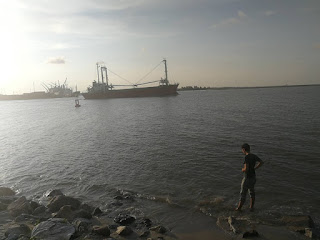Aftermath of the Earthquakes
Today marks six months since the February 6 earthquakes struck Türkiye and Syria. Iskenderun was one of the cities that was heavily impacted by the quakes and its aftershocks. There's nothing I can write to express the fears and concerns of the people who experienced the violent shaking in their homes. However, I can simply observe the aftermath as it appears six months down the line.
The photo above features Fener Caddesi, a busy road, along the right side of the image. All of the buildings that appear in the photo on the right side of the road seem fine. However, the site where I stood directly in front of as I took the picture used to have a building that was demolished. The same goes for the site across this one, between the three vehicles with their sides facing me and the buildings at the back. In fact, one of the smaller buildings there at the back that's right on the road seems to be pretty destroyed as well.
There are countless sites all around the city that are like the ones in the photos shown here. On one hand, I want to take more photos and show the extent of the damage. And on the other hand, I feel bad about such photos that represent death and destruction to the citizens of Iskenderun. There are people who lost their family members and friends. There are people who are still living in tents to this day.
The photo below is from a smaller street. In fact, it's just one apartment away from my aunt's home where I'm also staying. My uncle and his family are also living here because their building was damaged in the earthquakes. Thankfully, nobody in our family lost their life in the earthquakes.
Iskenderun is a city in the south of Türkiye on the Mediterranean Sea, on the Bay of Iskenderun to be exact. It's a city in Hatay Province with a population of about 300,000, including the greater region. Hatay borders Syria to the south and east. Iskenderun was founded by Alexander the Great in 333 BC who named it Alexandretta. The Ottomans took control of the city in the 15th century. Currently, there are tons of Syrian refugees in the city and Arabic can be heard everywhere.




Comments
Post a Comment